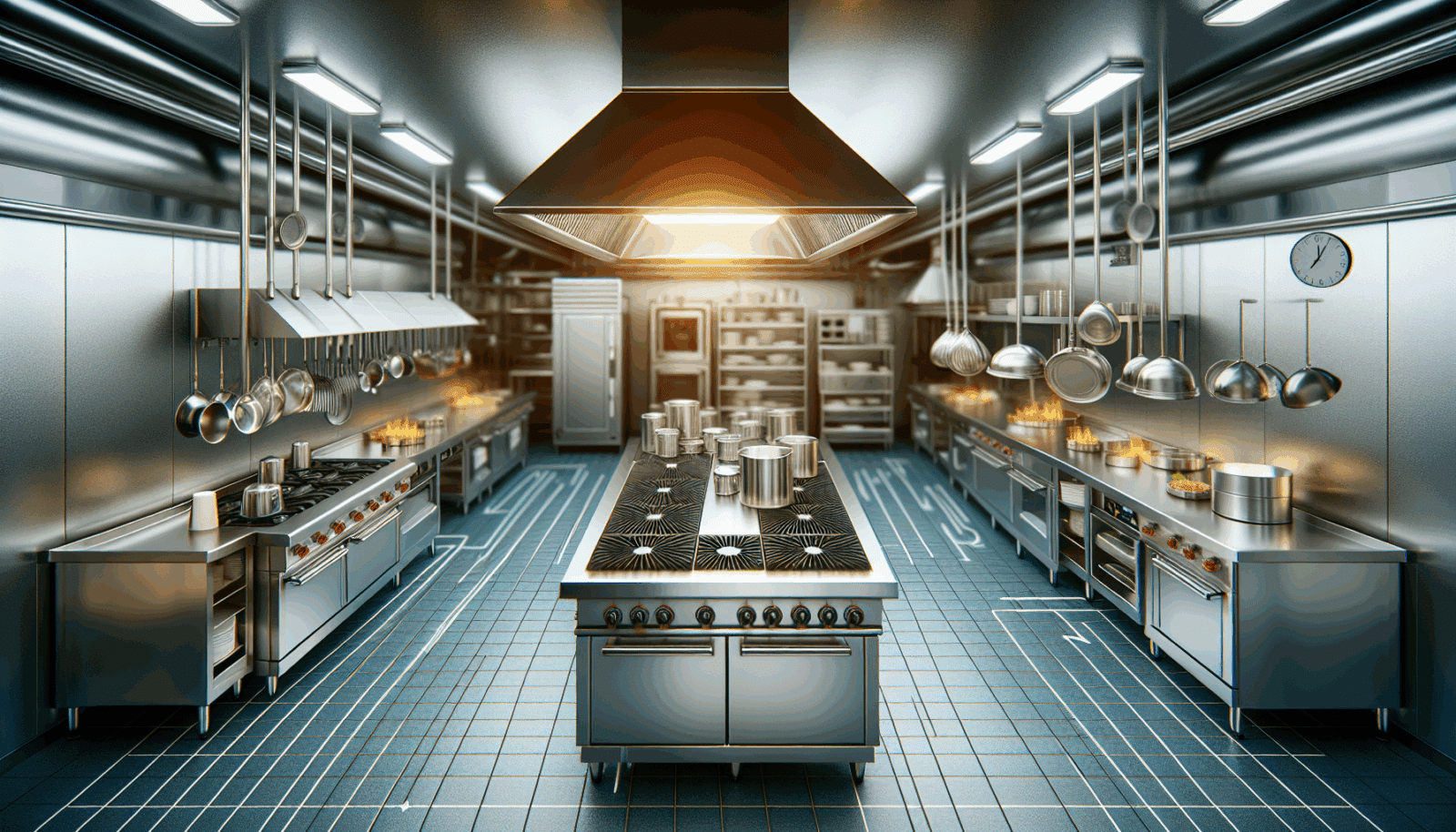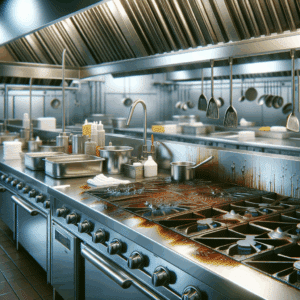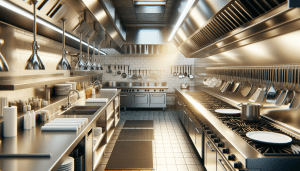Keeping your kitchen’s hood ventilation system clean is not just a chore; it’s a necessity for any homeowner who loves a safe and efficient kitchen. At Utah Hood Cleaning, we understand the challenges and the importance of maintaining a pristine cooking area. Whether you’re a seasoned chef or a home cooking enthusiast, this guide is designed to equip you with the knowledge and tips needed to properly clean your kitchen hood ventilation system. Let’s dive in and make your kitchen a cleaner, safer place.
Understanding Your Kitchen Hood Ventilation System
Kitchen hood ventilation systems play a pivotal role in keeping your cooking space free from smoke, odors, and airborne Grease. These systems, comprising the hood, filters, ducts, and Exhaust fan, work tirelessly to ensure that the air you breathe while cooking is clean. However, over time, grease and debris can build up, requiring regular maintenance to function effectively. Understanding the components and their function is the first step towards ensuring a thorough clean.
Regular cleaning not only prolongs the life of your system but also prevents fire hazards caused by grease accumulation. Plus, a clean ventilation system operates more efficiently, saving you money on energy costs in the long run. Knowing what makes up your hood ventilation system is crucial in addressing each component’s specific cleaning needs.
Why Regular Cleaning is Essential
The necessity of regular Kitchen Hood Cleaning cannot be overstated. Grease and other flammable substances that accumulate in your hood, filters, and ducts pose a significant fire risk. In fact, many kitchen fires start as a result of neglecting this crucial maintenance. Regular cleaning reduces this risk and ensures that your kitchen remains a safe place to create your culinary masterpieces.
Beyond safety, there’s also the matter of efficiency and hygiene. A clean ventilation system works more efficiently, effectively removing smoke, steam, and odors from your kitchen. This not only makes for a more pleasant cooking environment but also prevents the growth of mold and bacteria, ensuring that your kitchen remains a hygienic space for food preparation.
Preparing for the Clean
Before you start the cleaning process, preparation is key. Begin by gathering all the necessary tools and cleaning supplies. You’ll need a degreaser, warm water, a scrub brush or sponge, and protective gloves. It’s also wise to lay down some old newspaper or plastic sheeting to catch any drips or debris that falls during the cleaning process.
Next, make sure your kitchen hood is turned off and cool to the touch. This is crucial for safety. Removing the filters from the hood will give you better access to the interior. Most filters can easily be removed by sliding or popping them out. With everything prepped and ready, you’re set to start the deep cleaning your kitchen hood deserves.
The Cleaning Process
With your hood now prepped and ready, you can begin the cleaning process. Start with the filters, soaking them in a mixture of warm water and degreaser. While they soak, apply a degreaser to the interior and exterior of the hood. Allow it to sit for a few minutes to break down the grease, then scrub these areas thoroughly with your brush or sponge. The goal is to remove as much built-up grease and grime as possible.
Once you’ve scrubbed every nook and cranny of the hood, turn your attention back to the filters. Scrub them clean and rinse with warm water. After everything has been cleaned, reinstall the filters and wipe down the exterior of the hood for a sparkling finish. This process ensures that every component of your hood ventilation system works efficiently and safely.
Maintaining Your Hood Ventilation System
Maintenance is the key to preventing the buildup of grease and ensuring the longevity of your kitchen hood ventilation system. Regular checks and minor cleans prevent the system from becoming overly clogged and can significantly reduce the need for deep cleans. After each heavy use of the kitchen, a quick wipe down of the exterior of the hood and a brief inspection of the filters can work wonders.
Moreover, establishing a cleaning schedule based on the usage of your kitchen can help in maintaining optimal performance of your hood system. High-use kitchens may require monthly deep cleans, while less frequently used spaces might get by with quarterly cleanings. Consistency in maintenance will keep your kitchen hood ventilation system in top condition.
Troubleshooting Common Issues
Even with regular cleaning and maintenance, you may encounter issues with your kitchen hood ventilation system. Reduced efficiency, strange noises, and persistent odors can indicate a need for repair or deeper cleaning. Often, these problems stem from blockages in the ductwork or issues with the Exhaust fan. Identifying and addressing these issues promptly can prevent more significant problems down the line.
For more complex issues, it’s advisable to consult a professional. Technicians like us at Utah Hood Cleaning can diagnose and resolve any underlying problems, ensuring your system operates safely and efficiently. Regular professional inspections can also help identify potential issues before they become serious, saving you time and money in the long run.
Professional Cleaning Services
While many aspects of kitchen hood ventilation cleaning can be handled independently, there are times when professional cleaning services are necessary. Deep cleaning of ductwork, thorough inspections, and repairs are best left to expert technicians equipped with the right tools and knowledge. Professional cleaning ensures that every part of your ventilation system is addressed, including areas that are difficult to reach or require special attention.
Enlisting the help of professionals like Utah Hood Cleaning also provides peace of mind that your system is cleaned to the highest standards. Our team is trained to spot potential problems and provide proactive solutions, ensuring your kitchen remains a safe and efficient space. Whether it’s routine maintenance or a comprehensive deep clean, professional services offer an invaluable layer of assurance and efficiency.
DIY vs. Professional Cleaning: What’s Best for You
While DIY cleaning can effectively address the surface and some deeper aspects of hood cleaning, it has its limitations. DIY is great for regular maintenance and smaller, more manageable tasks. However, for comprehensive deep cleans, particularly of the ductwork and exhaust system, professional expertise is crucial. The specialized tools and techniques used by professionals can achieve a level of cleanliness that goes beyond what typical DIY efforts can accomplish.
Assessing your needs, the complexity of your system, and the level of buildup will help determine whether a DIY approach or professional intervention is necessary. For those unfamiliar with their system or facing significant challenges, seeking professional assistance may be the safer and more efficient choice.
Essential Tips for Effective Hood Cleaning
- Choose the Right Cleaning Agents: Selecting the appropriate degreaser is crucial for effective cleaning without damaging your system.
- Wear Protective Gear: Always wear gloves and eye protection to safeguard against chemicals and grease.
- Be Thorough: Don’t rush the cleaning process; ensuring every part is adequately cleaned will prevent issues down the line.
- Keep a Schedule: Regular cleaning prevents the buildup of grease and debris and keeps your system running smoothly.
- When in Doubt, Consult a Professional: For any uncertainties or major issues, professional advice can prevent mistakes and ensure safety.
Conclusion
Properly cleaning your kitchen hood ventilation system is crucial for safety, efficiency, and longevity. Whether you take on the task yourself or enlist the help of professionals like Utah Hood Cleaning, keeping your system clean is essential for a healthy and functional kitchen space. For thorough and professional kitchen hood cleaning services, don’t hesitate to reach out to us by phone at 801-853-8155 or Request a Free Quote. We’re here to help your kitchen stay clean, safe, and efficient.




